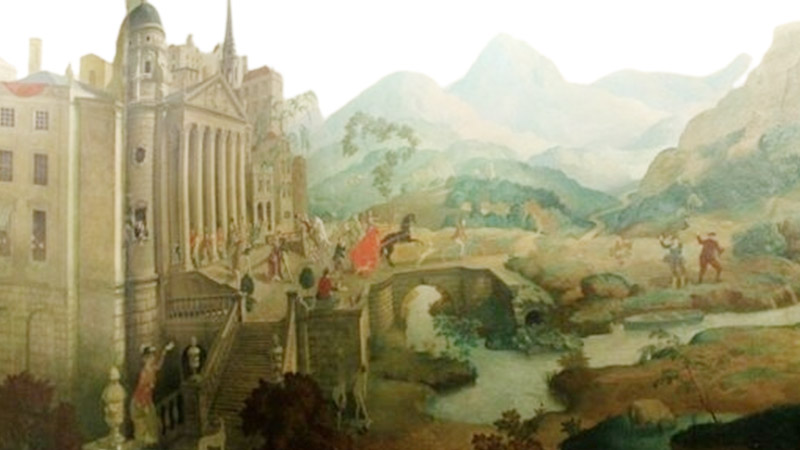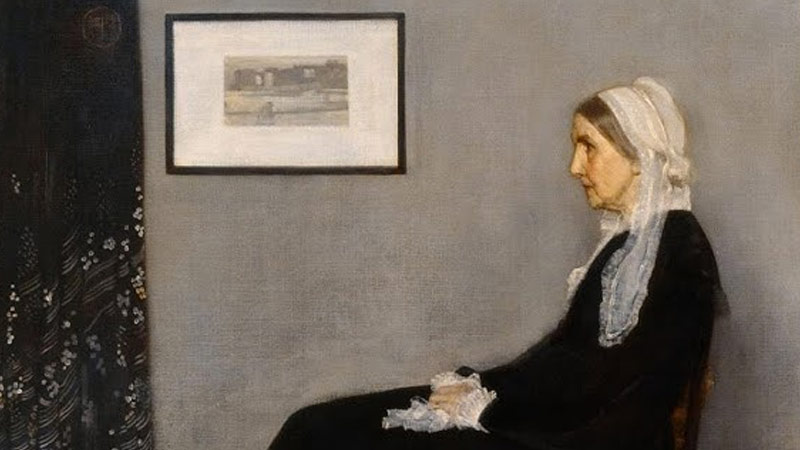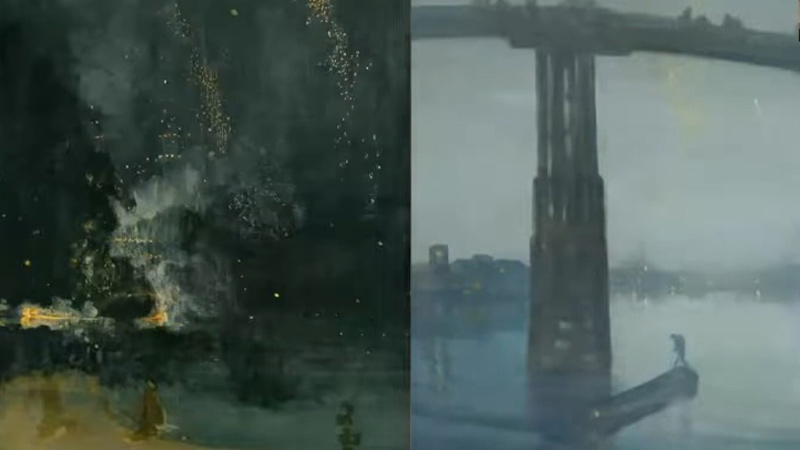Art has the power to inspire, provoke, and challenge us, but what happens when a work of art includes offensive or controversial imagery?
This is the question at the heart of the Whistler controversy, which centers around a 1920s mural by British artist Rex Whistler that is displayed in the Tate Britain art gallery.
The mural, titled “The Expedition in Pursuit of Rare Meats,” has been criticized for containing racist imagery, including depictions of black slaves on a leash and caricatures of Chinese figures.
The controversy has sparked a wider debate in the art world about how to handle works of art that contain offensive or controversial imagery, particularly those created in the past when attitudes were different.
In this blog post, we will explore the Whistler controversy, its historical context, and the arguments made for and against the preservation of the mural. We will also examine the wider debate about art and censorship and consider the implications of this controversy for the art world and beyond.

What Is the Whistler Mural?
Rex Whistler’s mural “The Expedition in Pursuit of Rare Meats” is a large-scale painting that covers the walls of a dining room in the Tate Britain art gallery.
The mural depicts a fantastical scene of hunters and explorers on a quest to find exotic meats, with a variety of animals, birds, and fish featured throughout. However, it is the depictions of people of color that have sparked controversy.
In the mural, black figures are shown in subservient roles, including one figure on a leash being led by a white man. There are also caricatures of Chinese figures, with slanted eyes and exaggerated features. These images have been criticized as racist and offensive, perpetuating harmful stereotypes and attitudes toward people of color.
The historical context in which the mural was created is important to consider when examining the controversy. Whistler painted the mural in the 1920s, a time when racial attitudes were very different from today.
It was a time of colonialism and imperialism when white Europeans viewed people of color as inferior and often used them as subjects in art and literature to reinforce this belief.
The mural can be seen as a product of this time, reflecting the attitudes and beliefs of its creator and the society in which he lived.
It is also worth noting that Whistler was a well-respected artist of his time, known for his intricate and imaginative murals and illustrations. However, this does not excuse the racist imagery in the mural, and it is important to confront and address these problematic elements in the work.
What Is the Whistler Controversy?
The Whistler mural controversy revolves around the criticism of the artwork due to its racist imagery, perpetuating harmful stereotypes and attitudes toward people of color.
Critics argue that the mural is offensive and inappropriate for public display, asserting that it sends a message that racism is acceptable both in art and society at large.
The debate has prompted different perspectives on how to address the issue.
Calls for Removal or Alteration
Some advocates for social justice and cultural sensitivity have called for the complete removal of the Whistler mural from public display.
Others suggest an alternative approach, proposing alterations to the artwork to either remove or cover up the offensive elements. This viewpoint emphasizes the need to eliminate harmful imagery rather than preserve it.
Preservation as a Historical Artifact
Conversely, there are arguments made for the preservation of the mural as a historical artifact.
Proponents of this perspective contend that the artwork reflects the attitudes and beliefs of its time, serving as a tangible representation of historical context.
They argue that removing or altering the mural could erase an important aspect of history.
Educational Opportunity
Some argue that the mural should be viewed in its historical context, with its offensive elements serving as an opportunity for education and discussion about racism and colonialism.
This perspective suggests that rather than eradicating the mural, it could be used as a tool for fostering awareness, understanding, and dialogue about the problematic aspects of history.
Tate Britain’s Response
In response to the controversy, the Tate Britain Art Gallery has taken a proactive approach. The gallery announced plans to commission a new artwork to be displayed alongside the Whistler mural.
The intent is to provide different perspectives on the histories and issues raised by the mural.
Additionally, the gallery pledged to offer context and information about the mural and its history, including its controversial elements. The goal is to encourage dialogue and critical engagement with the work.
Varied Reactions to Tate Britain’s Response
Reactions to Tate Britain’s response have been mixed.
While some criticize it as insufficient, arguing that more direct action such as removal is necessary, others praise the gallery for acknowledging the problematic elements of the mural and taking steps to address them in a thoughtful and nuanced way.
The controversy surrounding the Whistler mural remains ongoing, and the resolution will likely depend on continued public discourse and the decisions of involved stakeholders.
Art and Censorship

The Whistler controversy has sparked a wider debate in the art world about how to handle works of art that contain offensive or controversial imagery.
This debate centers around the tension between the values of freedom of expression and the need to address harmful or offensive content in art.
Some argue that works of art should be preserved as historical artifacts, even if they contain offensive or problematic elements. They argue that censorship or removal of such works would be a form of erasure and that art should be viewed in its historical context.
When it comes to mural art and censorship, potential issues can arise due to the subjective nature of art, cultural sensitivities, or changes in societal norms.
Here are some considerations:
Subject Matter
Murals, often large-scale and public, may depict themes or subjects that some individuals or groups find controversial. This could be related to politics, religion, sexuality, or other sensitive topics.
In such cases, there might be debates about whether the content is suitable for public display.
Historical Context
Sometimes, murals are created in a different historical context, and societal norms evolve over time.
What might have been acceptable or unnoticed in the past may be viewed differently by contemporary audiences. This can lead to discussions about whether to preserve, alter, or remove certain artworks.
Cultural Sensitivity
Murals may contain elements that are culturally sensitive, and concerns may be raised about cultural appropriation or misrepresentation.
Artists and institutions may need to navigate these issues carefully to ensure that the art is respectful and considerate of diverse perspectives.
Public Spaces
Murals in public spaces can be subject to community standards and regulations.
If there are disagreements about the appropriateness of certain elements, it could lead to discussions about whether the mural should be altered or removed.
Artistic Freedom vs. Responsibility
Artists value their creative freedom, but they also bear a certain responsibility, especially when their work is displayed in public spaces.
Striking a balance between artistic expression and being mindful of the impact on the community is crucial.
The Case of John Ruskin vs. James Whistler

The case of John Ruskin vs. James Whistler is a significant episode in the history of art that unfolded in the late 19th century.
The dispute arose over a painting titled “Nocturne in Black and Gold: The Falling Rocket,” created by the American artist James McNeill Whistler.
The case is notable for its impact on artistic freedom, the role of critics, and the relationship between artists and their patrons.
Background
In 1877, Whistler filed a libel suit against the art critic John Ruskin. The conflict stemmed from Ruskin’s review of Whistler’s painting in his periodical, “Fors Clavigera.”
In his review, Ruskin criticized the work, stating that he had “never expected to hear a coxcomb ask two hundred guineas for flinging a pot of paint in the public’s face.”
Essentially, Ruskin accused Whistler of charging exorbitant prices for what he considered a careless and unfinished piece.
The Trial
The trial, which took place in 1878 at the Queen’s Bench in London, became a spectacle that attracted widespread attention. Whistler, known for his wit and flair, defended his artistic principles.
During cross-examination, when asked how he justified the high price of his artwork, Whistler famously responded that he was not selling the labor and time he spent on the painting but rather his “knowledge and experience.”
Verdict and Implications
The jury ultimately ruled in Whistler’s favor but awarded him only one farthing in damages.
While Whistler won the case, the negligible amount of damages reflected the jury’s acknowledgment that Ruskin’s critique, though harsh, did not substantially harm Whistler’s reputation or financial standing.
The case had broader implications for the relationship between artists and critics.
It underscored the importance of artistic freedom and the right of artists to set the value of their work, challenging the prevailing notion that the public had the right to dictate the worth of art.
Whistler’s victory was seen as a triumph for artistic independence and creative expression.
Legacy
The trial left an indelible mark on the art world, contributing to the ongoing dialogue about the subjective nature of art and the freedom of artists to pursue their creative vision without undue interference.
The case also highlighted the evolving role of critics in shaping public perception of art and the responsibilities associated with their critiques.
In the broader context of art history, the Whistler vs. Ruskin case remains a landmark event.
It emphasized the importance of artistic autonomy and the rights of creators to determine the value of their work, laying the groundwork for the modern understanding of artistic expression and its relationship with critique and commerce.
Controversial Artworks and Their Debates about Censorship
| Artwork | Artist | Controversial Elements | Arguments for Preservation | Arguments for Removal/Alteration |
|---|---|---|---|---|
| “The Expedition in Pursuit of Rare Meats” | Rex Whistler artist | Depictions of black slaves on a leash and caricatures of Chinese figures | Historical artifact, educational opportunity | Perpetuation of harmful stereotypes, trauma to marginalized communities |
| “Piss Christ” | Andres Serrano | Photograph of a crucifix submerged in urine | Freedom of expression, artistic merit | Blasphemy, disrespect for religion |
| “The Holy Virgin Mary” | Chris Ofili | A painting featuring elephant dung and pornographic images | Freedom of expression, critique of colonialism | Offense to religious sensibilities, the perpetuation of stereotypes |
| “A Subtlety” | Kara Walker | Sugar sculpture of a black woman with exaggerated features | Critique of racism and slavery, educational opportunity | Perpetuation of harmful stereotypes, trauma to marginalized communities |
Note: This table is not exhaustive and represents only a few examples of the many controversial artworks that have sparked debates about censorship. Arguments for preservation and removal/alteration are not necessarily mutually exclusive, and there are often many different perspectives on each issue.
FAQs
Rex Whistler Mural was a British artist and designer who lived from 1905 to 1944. He is known for his murals, illustrations, and designs for theater and ballet productions.
The Whistler mural, titled “The Expedition in Pursuit of Rare Meats,” was created in 1927-1928.
There are many works of art that have been subject to controversy and debate over the years, including Andres Serrano’s photograph “Piss Christ,” Chris Ofili’s painting “The Holy Virgin Mary,” and Kara Walker’s sculpture “A Subtlety.”
Art institutions must navigate a complex and often challenging terrain when it comes to addressing problematic content in art. Many institutions approach this issue by providing context and information about the work, creating opportunities for discussion and critical engagement, and taking steps to ensure that all visitors feel safe and respected.
Visitors can engage with works of art that contain problematic or controversial elements by educating themselves about the historical and cultural context of the work, listening to the perspectives of others, and participating in respectful and open-minded discussions. By engaging with these works in a thoughtful and critical way, visitors can help to create a more inclusive and understanding art community.
Conclusion
The controversy surrounding the Rex Whistler Mural in Great Britain has highlighted the complex issues surrounding offensive or problematic imagery in art.
The debate over whether to remove, alter, or preserve such works raises important questions about the role of art in society, the values of freedom of expression, and the need to address harmful content.
While there are different perspectives on the issue, the Whistler controversy has prompted Tate Britain to take steps to address the problematic elements of the mural in a thoughtful and nuanced way.
By commissioning a new artwork to be displayed alongside the mural and providing context and information about the work, the gallery has created opportunities for education and discussion about racism and colonialism in art.
Ultimately, the Whistler controversy serves as a reminder of the importance of critical engagement with works of art, and the need to confront and address harmful content in a way that is respectful and inclusive of all visitors.
As the wider debate about art and censorship continues, it is important to remain open to different perspectives and to work towards solutions that balance competing values and interests.
Leave a Reply